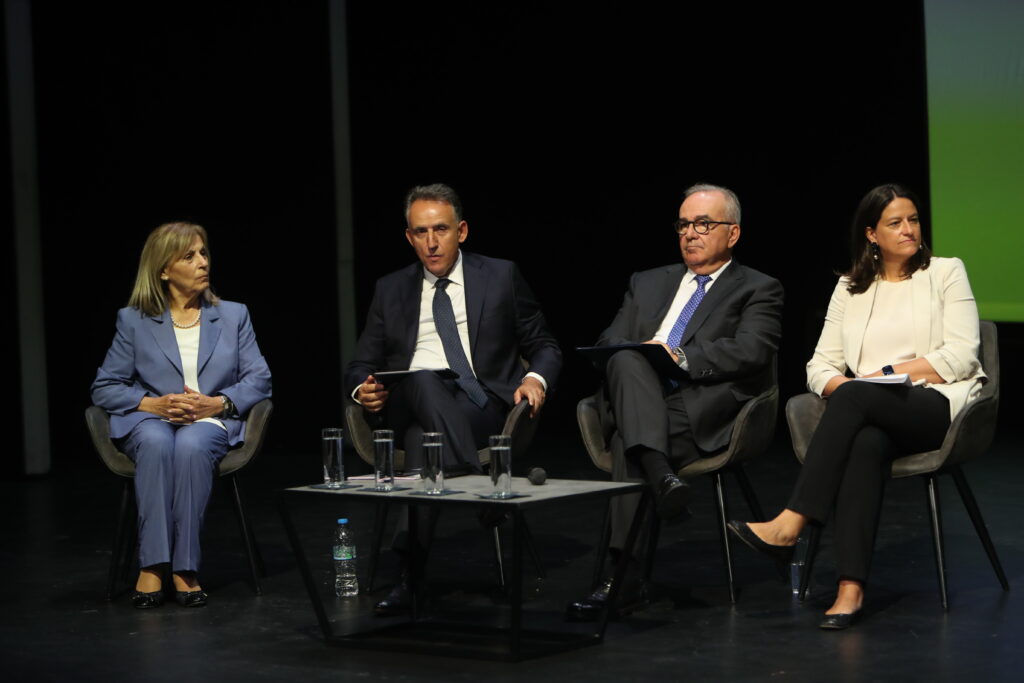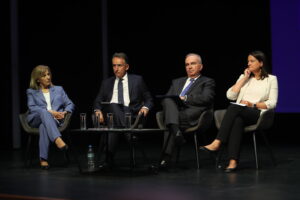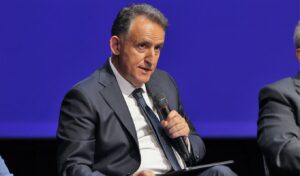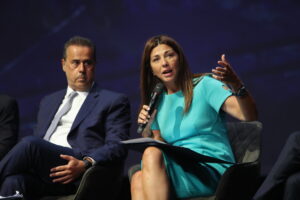The Public Investment Development Program (PDE) will register an increase of 212% by 2026, totaling over seven years what amounted to 5.4 billion euros in 2019. This year, it reached 14.6 billion euros (+170%) and next year it will approach 16.9 billion euros, noted Deputy Minister of National Economy and Finance, Nikos Papathanasis, emphasizing that the systematic economic strategy followed by the Greek government opens the way for vital projects across the country, with Northern Greece and Central Macedonia at the heart of the development equation. Speaking at a panel on development and infrastructure, held today at an event presenting major projects completed and being implemented in Thessaloniki and Northern Greece, Mr. Papathanasis stressed that “everything we heard today from ministers and organizations about projects that were implemented and are being implemented would not exist without a stable economy and serious politics.”
He characteristically emphasized that “projects need resources, resources need a stable economy, a stable economy needs political will and we have it.” He also noted that “projects are made with national and European resources generated by development and not from taxes and loans.”
Indeed, he stressed that Central Macedonia, Thessaloniki, municipalities and local businesses “are taking the lead in the country’s new development map, not as observers, but as protagonists.”
Papathanasis: The leap in the Public Investment Development Program
The leap achieved in the Public Investment Development Program “is the basis for starting, implementing and completing major projects throughout the country and especially in Northern Greece,” stressed Mr. Papathanasis and added that Central Macedonia is at the center with 2.7 billion euros for projects and development.
He clarified that the amount of 2.7 billion euros refers to total resources from all funding instruments for Central Macedonia, and explained that 1.4 billion euros comes from the NSRF 2021-2027 and is increased by 70% compared to the previous programming period.
Overall, according to him, 199 projects worth 600 million euros are underway in the Central Macedonia Region, with 1.3 billion euros in social and public structures, 34,000 businesses in Thessaloniki and 68,000 total in the Region have been supported, 8,000 small and medium enterprises were supported by the Hellenic Development Bank, while 1,000 are the beneficiaries in the “My Home 2” program with 173 million euros.
Among the 12 most critical projects, he highlighted the upgrade of the “Theagenio” Anti-Cancer Hospital, which aspires to become a model for the Balkans, 17 new school units, new court buildings, cultural interventions, hospital renovations and urban transport projects and the extroversion program for Small and Medium Enterprises “which gives breath and perspective to local entrepreneurship,” as he noted.
“They didn’t come from heaven – they came from planning”
Mr. Papathanasis made it clear that the development dynamics of Central Macedonia are not a “gift,” but the result of hard negotiation and structured planning. As he characteristically said, in 2022 the programs of the new NSRF were approved and “that was when the Prime Minister, Kyriakos Mitsotakis, negotiated and we secured more resources for Central and Western Macedonia.”
Closing his remarks, Mr. Papathanasis stressed: “Words are lost, works remain. And works require resources, which are born only through a strong, stable economy. This is our goal: to ensure continuity, to maintain the development momentum, to continue the work -in practice, not in words.”




